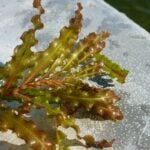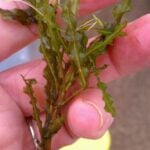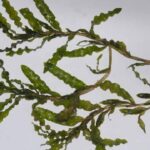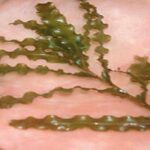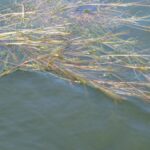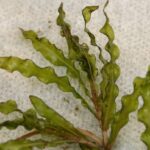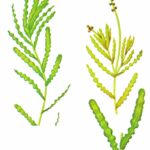Curly Leaf Pondweed
Other Common Names: crispy-leaved pondweed, crisped pondweed, curly pondweed
(Potamogeton crispus)
Non-Native
Curly leaf pondweed has green to reddish leaves with wavy edges that have fine teeth.
Description
Branching stems are reddish and thin, less than one-tenth of an inch, and can grow up to 15 feet long. Curly leaf pondweed can grow in depths up to 15 feet and tolerates low water clarity.
It appears reddish brown in the water but is green when observed out of the water. Curly leaf pondweed gets its name from the rippled or wavy nature of its submersed leaves.
This type of pondweed does not produce floating leaves. The submersed leaves are less than a half inch wide and two to three inches long with tiny teeth along the edges. The turions at the ends of some leaves look like sharp mini pinecones.
Leaves are slightly translucent with a reddish midrib. The winter leaves are more translucent and bluish-green while the summer leaves are more opaque and green to red.
Curly leaf pondweed grows under the ice in winter and early spring then dies back in mid-summer.
Curly leaf and clasping leaf pondweed look similar, but clasping leaf pondweed does not have serrated leaves or the turions that curly leaf pondweed has.
Management Options
Click here for more information on how to control curly leaf pondweed.
Location
Curly leaf pondweed can be found across the United States.
Propagation
roots, turions
Management Options
Click here for more information on how to control curly leaf pondweed.


